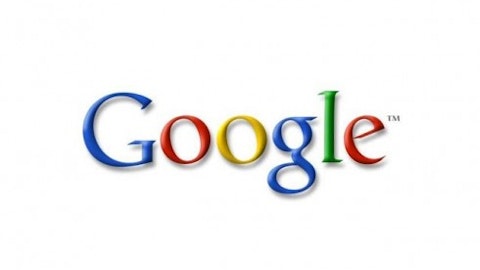
But the other story is one of a fast-growing services company. The server & tools division, which is bigger than the Windows division, recorded $5.5 billion in revenue as sales grew by 9% year-over-year. The Azure platform has increased the number of enterprise customers by 25% year-over-year, and SQL Server revenue grew by 16%. Business revenue grew by 7%, with the cloud-based Office 365 achieving a $1.5 annual run rate.
Overall the company reported $19.9 billion in revenue, up about 10% year-over-year. Analysts, for some reason beyond me, expected nearly 15% revenue growth. EPS, adjusting for the inventory charge this year and a goodwill impairment last year, fell by a penny to $0.66. Analysts were expecting $0.75 in EPS.
In a world where the PC market is declining by a double-digit percentage annually Microsoft Corporation (NASDAQ:MSFT) managed to grow revenue by 10% and keep earnings basically flat. Clearly, it’s time to panic.
Office 365
One of the big worries about Microsoft Corporation (NASDAQ:MSFT) is that the company won’t be able to keep selling people new versions of Microsoft Office every few years, especially with alternatives like Google Inc (NASDAQ:GOOG) Docs. But Microsoft is shifting its business model for Office to a subscription service, and so far it’s seen success. Instead of having to buy new versions users and businesses simply subscribe to Office 365 for a monthly fee. For home users the cost is just $10 per month, or $100 per year, far less than the typical price of buying the software upfront. Businesses pay per user and also receive business-orientated services like enterprise-grade email and other IT services.
This business model allows Microsoft Corporation (NASDAQ:MSFT) to avoid the trouble of trying to sell users and businesses on upgrades and instead gives the company a stream of recurring income. Office 365 now has a $1.5 billion annual run rate, up from $1 billion just a few months ago. I suspect that eventually Office 365 will make up most of Microsoft’s Office revenue, and with hundreds of millions of people using Office around the world there’s plenty of opportunity.
It should be noted that 85% of the Business division, which contains Office, is from businesses while only 15% is from consumers. Because of this, the shift to tablets on the consumer side shouldn’t affect things very much at all. Microsoft Corporation (NASDAQ:MSFT) guided for mid single-digit growth for business revenue and a decline in consumer revenue, so there should be net growth going forward.
The Business division has fantastic margins, and the operating margin for the division actually increased year over year to about 67%. $4.8 billion of the $6 billion in operating income came from the Business Division, and the continued success in the enterprise should help to maintain these levels.
The big competitor to Office is Google Inc (NASDAQ:GOOG) Docs, but Office has some real advantages. Google Docs is aimed mainly at consumers and provides a minimal set of features, good enough for many but not nearly as polished an experience as Microsoft Office. The enterprise overwhelmingly uses Microsoft Corporation (NASDAQ:MSFT) Office, and it’s unlikely that there will be a mass exodus to Google Inc (NASDAQ:GOOG) Docs, especially now that Microsoft offers a cloud-based version. Google will pick up some share, but Microsoft will not let its biggest cash cow be taken away without a fight.
Another market in which Microsoft is competing with Google is search and online advertising. Microsoft’s Bing search engine increased its U.S. market share to 17.9%, up 230 basis points year-over-year. Online advertising revenue increased by 11% as Microsoft is slowly chipping away at Google’s dominance.
Google, like Microsoft, reported disappointing earnings. Google missed badly on both revenues and profits, and the shift to mobile search has caused a lower cost-per-click and hurt the core advertising business. Google’s shares were hit, but not nearly as hard as Microsoft’s
Continued strength in server & tools
The most promising division for Microsoft Corporation (NASDAQ:MSFT) is its server & tools division, which saw double-digit bookings growth in the quarter. Product revenue was up 9% along with enterprise services revenue, and Hyper-V, Microsoft’s entry into the virtualization market, is gaining market share. One of the gems of this division is Windows Azure, a cloud platform which competes with Amazon.com, Inc. (NASDAQ:AMZN)’s web services. Azure became a $1 billion business in April, and the growth prospects are truly staggering. Forrester Research analyst James Staten has this to say:
I expect them to double annually from here. Microsoft probably has more net new growth opportunity sitting in front of them than probably anyone in the market.
Within a few years Azure could be bringing in more revenue annually than Windows. Microsoft is quickly diversifying itself, and it should pay off in the long-run.
The bottom line
The key to Microsoft is the enterprise, and that business is strong. Windows 8 has been slow to gain acceptance from consumers, and Surface RT was a disaster, but Microsoft Corporation (NASDAQ:MSFT)’s other businesses are growing at an impressive pace. Office remains strong, and Office 365 should allow Microsoft to fend off Google’s advances, while Azure has the potential to grow far larger than it is today. The huge drop in the share price was an overreaction, and in the long-term Microsoft is in a better position than many people think.
The article Microsoft Is Stronger Than People Think originally appeared on Fool.com and is written by Timothy Green.
Timothy Green owns shares of Google. The Motley Fool recommends Google. The Motley Fool owns shares of Google and Microsoft. Timothy is a member of The Motley Fool Blog Network — entries represent the personal opinion of the blogger and are not formally edited.
Copyright © 1995 – 2013 The Motley Fool, LLC. All rights reserved. The Motley Fool has a disclosure policy.





